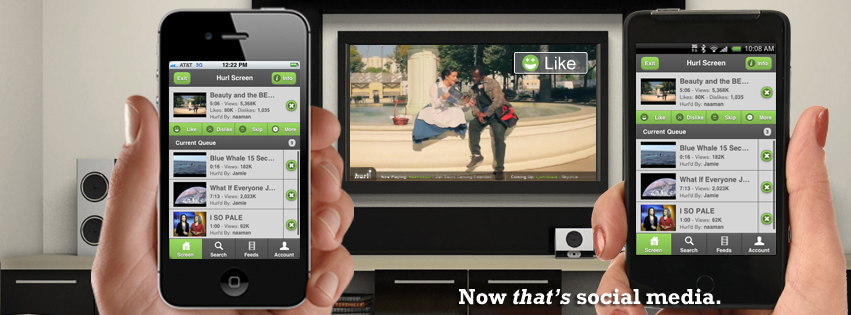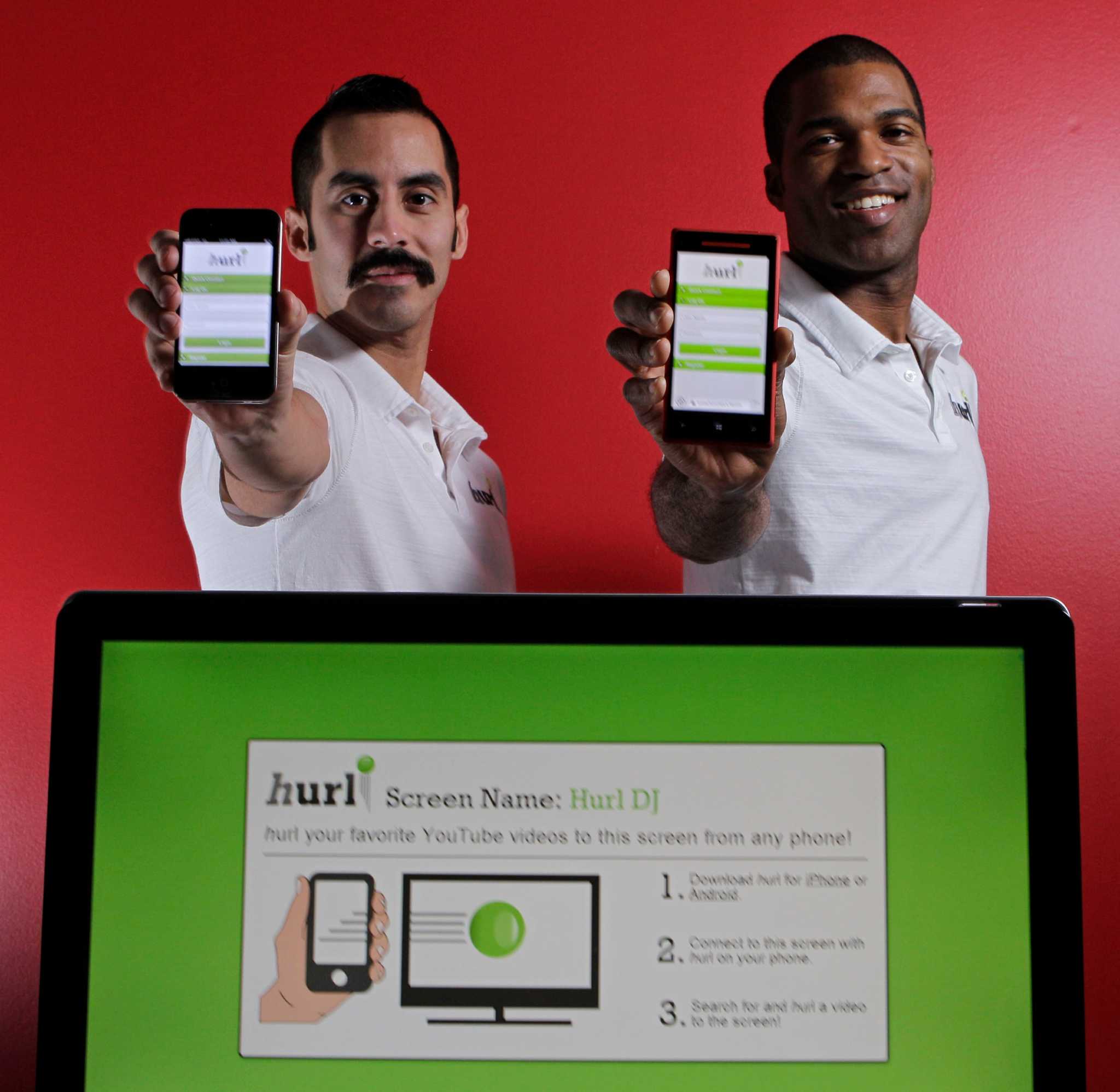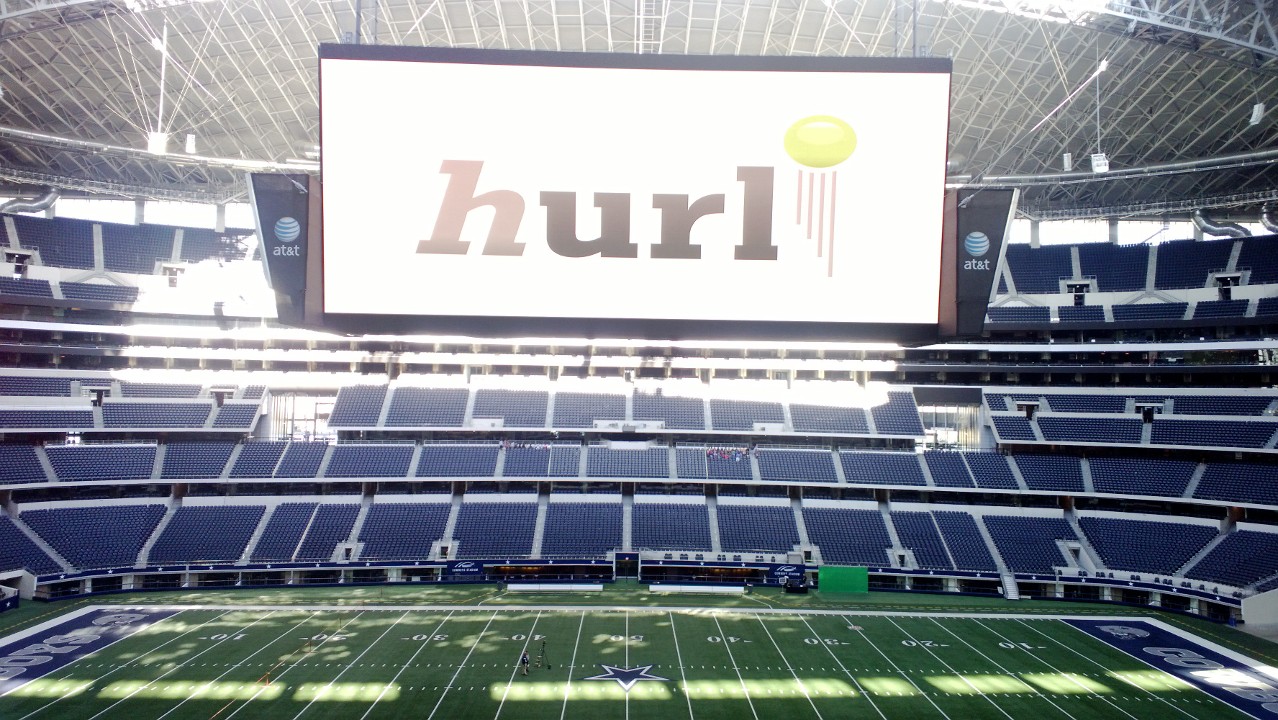The One Word You Don’t Use to Describe Your Mission-Driven Company
Here’s the simple story of how a simple app in the Windows Store gained 10,000 users in just a few short weeks. It’s all about not being perfect.
This blog post was written by Douglas Crets, Community Manager of The Microsoft BizSpark Program, a community of 50,000+ startup companies and their founders in 154 countries.
The Problem with Perfect
Perfect does not accurately describe a business.
Perfect can’t really describe a market.
Perfect doesn’t work well to define a product-market fit.
Any founder will tell you that starting out with this expectation is definitely going to lead to problems. You can’t get to perfect by drafting out a vision to perfect. You need to depend on something a lot more innate to your experience – a full-on encounter with a problem.
But you can get to big numbers – large downloads, investment money, big customer accounts – by doing a few simple things.
The first of these is, DON’T SEEK PERFECT. DON’T EVEN USE THE WORD.
Start With Wanting Something Better By Experiencing Something Bad
Johnson's drive to create an app started with something a lot more tangible than a market idea. It was a sweaty party where nobody was doing anything, except looking down at their phones.
Co-Founders Naaman (left) and Lawrence Johnson (right)
For Lawrence Johnson, a communications graduate from the University of Houston, that problem was a philosophical one – social loneliness in public spaces, especially at parties. Call it smartphone ennui.
So many people were looking down at their phones during public events that Johnson basically thought the world had lost its meaning.
“In public spaces, social media has become anti-social. Seeing friends and family glued to their smartphones instead of interacting with one another while at social gatherings was painful,” says Johnson.
He and a group of three friends created Hurl, which takes any YouTube video (for now) and “hurls” it across the room to any internet TV for public broadcast. Your first thought might be that this is still narcissistic. You would be wrong. Here's the app being hurled to the giant Jumbotron at Texas Stadium -- the largest TV in the world.
In a hot bar in Austin, Texas recently, this created a party of DJs, and opened up the public space in a way you have never experienced. And at recent house parties and events, this app has basically turned everything from music experiences to dance into a hugely public affair.
“We’ve revived the tribal experience, telling new stories, beating new drums all around the newer, warmer fire,” says Johnson. Okay, points off for calling the electric blue of the big screen tv a fire, but you get the point.
One Day, Everything Digital Is a Tribe Echolocator
According to Johnson, one day we will be able to use our mobile devices as a launching platform from which you will be able to move your personal, private crowd-seeking or connection-seeking behavior and displace it from the phone to an outer device that influences the public space.
“The idea is that anything with a URL (uniform resource locator) will be compatible with our platform. H-URL. Nowadays everyone is working with API’s but HAPI just doesn’t have the same ring!” says Johnson.
It says something that most college parties devolve into drunkenness and oblivion. We seem to be innately – genetically? – averse to really communicating with people in big social events, and more prone to collective interaction.
But collective interaction is what makes us human, and whether we like to admit it, or not, collective behavior is at the root of everything “individual” we do. Just look at things like shopping and voting candidates for public office.
We go shopping for clothes to look like everyone else with the same tastes, and fit in.
We cast our individual votes – by the millions – to join others in casting ballots for the “right” person to represent “our” interests.
Hurl is one of the first apps that takes a distinctly individualistic experience on a distinctly individual device and makes it “socially acceptable” for mass consumption of what is going on on that screen.
This is the kind of thing that should be very interesting to brands, and other video providers like Netflix, Hulu, or Amazon.
Says Johnson:
With Hurl, we are building a platform that empowers brands of all sizes to interact with audiences in a variety of ways. Whether its friends sharing the latest viral video from YouTube or a bar owner letting patrons know about an amazing drink special, the goal is to transform TV screens everywhere in to objects of real social interaction.
The Four Pillars of Adopting Simple
The question, though, is how did such a simple mechanism get to be so popular and what are the pieces to any company that make for this kind of interaction and success (what some call traction)?
There are four simple pieces:
- A cohesive team
- A unified sense of values and vision
- Simple execution of a simple task
- A sense that the consumer forgets the simple task and changes behavior through adoption
Hurl accomplishes a somewhat technically complex cloud-based thing very simply, because there are no complex pieces to the culture of the company or the vision of the team.
1. The team has known each other since before college
“Our team has known each other for over 10 years now,” says Johnson.
2. The team never struggles to understand WHY they are doing what they are doing.
“We understand what motivates one another and have vested interest in leaving a positive legacy behind. We share a vision about where technology is headed and firmly believe in our ability to influence its course."
3. They boil down what they are doing into a very simple idea, and execute it.
“Every Hurl screen is a platform for sharing ideas and we’re all about that.”
4. And the consumer gets it.
You can learn more about why Johnson and his team are doing what they are doing by watching our half hour interview with him on The BizSpark Show.
Comments
- Anonymous
March 07, 2015
This post is very educational stuff and written well for a change Its nice to see that some people still know how to produce a quality post.http://theswansystembook.wikidot.com - Anonymous
April 24, 2015
The idea is that anything with a URL (uniform resource locator) will be compatible with our platform. H-URL. Nowadays everyone is working with API’s but HAPI just doesn’t have the same ring!
Regards, my contacts: http://www.researchpaperwritings.org - Anonymous
May 11, 2015
If you make the decision to continue your education at college http://buycollegeessay.org or university, be ready that it is going to be tough. One day you will get the assignment of writing a coursework proposal.
Regards - Anonymous
May 19, 2015
Well, I think these are good for development for every company related to web design
------
Ken @ http://bestcollectionwordpressthemes.com/best-wordpress-themes-2015/
http://bestcollectionwordpressthemes.com/ - Anonymous
June 22, 2015
You have provided terribly helpful data concerning essay writing http://www.essaymania.net/. I even have taken lots of fabric concerning facilitate writing school essay from your post. thus please perpetually keep this follow to produce such information for usage of scholars - Anonymous
September 03, 2015
Thats a great idea : http://www.code-promo-amazon.fr/ - Anonymous
September 06, 2015
thanks for the information by http://www.sewesys.com">web design kerala - Anonymous
September 06, 2015
thanks for the information by http://www.sewesys.com - Anonymous
September 06, 2015
stallion is the best company formation service provide in dubai just look at inhttp://stallionbusiness.com/ - Anonymous
September 20, 2015
The specific Computer Technology http://cisco300209practicetestquestions.blog.com/ Industry Association specifics are explored and that is produced by Professional Documentation Specialists who’re constantly using segment skill to produce right, and practical - Anonymous
September 25, 2015
The comment has been removed - Anonymous
September 27, 2015
http://www.manufacturingprivatelabel.com/ can help your dreams of having your own product come alive. Intermountain Supplements offers a wide variety of custom formulation services including liquids, capsules, sprays, powders, and more. - Anonymous
September 28, 2015
http://mathematicaltips.weebly.com/ is providing the best Maths and English tutor in Sydney and if you are looking for maths tutor for your child contact us now! - Anonymous
September 28, 2015
The comment has been removed - Anonymous
October 19, 2015
Adzet is the world's leading Marketing Platform - providing marketing strategy andhttp://www.adzet.com/">business development strategy to small and medium businesses worldwide - Anonymous
October 30, 2015
As part of an assignment for research I have to find an article with relevant information on this topic and give the teacher our opinion and the article. Your article helped me a lot.https://www.youtube.com/watch?v=mKf9TVjd5Fw">Evil Traffic Magician - Anonymous
November 01, 2015
I think these developments can be good for web design and other marketing things.
-----
Mike @ http://bestfreewordpressthemes2016.com
https://www.facebook.com/bestwordpressthemes2016/ - Anonymous
November 03, 2015
The comment has been removed - Anonymous
November 10, 2015
Now we are one step ahead in providing updated real exam files and pdf and demo for Pass4sure. We provide 100% passing guarantee. If you fail then I will get full refund. And we have All Microsoft and Cisco exam Available.http://www.pass4sures.com/SY0-401.html - Anonymous
December 02, 2015
sbobet asia http://bandartaruhan.co - Anonymous
December 16, 2015
Thanks on your marvelous posting! I certainly enjoyed reading it
http://www.2l3abgame.com
http://www.2l3abgame.com/2014/08/blog-post_64.html
http://www.2l3abgame.com/2014/09/blog-post_3.html
http://www.2l3abgame.com/2014/10/The-sniper.html
http://www.2l3abgame.com/2015/02/Friv250.html
http://www.2l3abgame.com/2015/10/2016Games.html
http://www.2l3abgame.com/2014/09/motoplay.html
http://www.2l3abgame.com/2014/09/blog-post_2.html
http://www.2l3abgame.com/2014/08/blog-post_21.html
http://www.2l3abgame.com/2014/10/frive-kiss.html
http://www.2l3abgame.com/2014/10/Slugterra.html
http://www.2l3abgame.com/2014/09/candy-crush.html
http://www.2l3abgame.com/2014/09/WWe.html
http://www.2l3abgame.com/2014/08/blog-post_61.html
http://www.2l3abgame.com/2014/10/Gambol-games.html
http://www.2l3abgame.com/2014/09/blog-post_89.html
http://www.2l3abgame.com/2014/09/sonic.html
http://www.2l3abgame.com/2014/09/blog-post_93.html
http://www.2l3abgame.com/2014/10/Subway-Surfers.html
http://www.2l3abgame.com/2015/07/SpongebobGames.html
http://www.2l3abgame.com/2015/03/FlashGames.html
http://www.2l3abgame.com/2014/09/jeux-de-friv.html
http://www.2l3abgame.com/2014/08/blog-post_96.html
http://www.2l3abgame.com/2014/09/blog-post.html
http://www.2l3abgame.com/2014/10/y8.html
http://www.2l3abgame.com/2014/09/Crush.html
http://www.2l3abgame.com/2014/12/Ninja-Chicken.html
http://www.2l3abgame.com/2015/01/Subway-Surfers.html
http://www.2l3abgame.com/2014/09/Girls-Games.html
http://www.2l3abgame.com/2014/11/ChickenInvaders3.html
http://www.2l3abgame.com/2014/10/Batman-games.html
http://www.2l3abgame.com/2014/10/baby-hazel.html
http://www.2l3abgame.com/2014/10/Ninja-Turtles.html
http://www.2l3abgame.com/2014/10/Action-Games.html
http://www.2l3abgame.com/2014/10/Friv.html
http://www.2l3abgame.com/2014/10/kiss-love.html
http://www.2l3abgame.com/2014/10/Rail-rush.html
http://www.2l3abgame.com/2015/08/2015_1.html
http://www.2l3abgame.com/2014/10/Fight-Games.html
http://www.2l3abgame.com/2014/09/dragon-ball.html - Anonymous
December 16, 2015
Thanks on your marvelous posting! I certainly enjoyed reading it
http://www.2l3abgame.com
http://www.2l3abgame.com/2014/08/blog-post_64.html
http://www.2l3abgame.com/2014/09/blog-post_3.html
http://www.2l3abgame.com/2014/10/The-sniper.html
http://www.2l3abgame.com/2015/02/Friv250.html
http://www.2l3abgame.com/2015/10/2016Games.html
http://www.2l3abgame.com/2014/09/motoplay.html
http://www.2l3abgame.com/2014/09/blog-post_2.html
http://www.2l3abgame.com/2014/08/blog-post_21.html
http://www.2l3abgame.com/2014/10/frive-kiss.html
http://www.2l3abgame.com/2014/10/Slugterra.html
http://www.2l3abgame.com/2014/09/candy-crush.html
http://www.2l3abgame.com/2014/09/WWe.html
http://www.2l3abgame.com/2014/08/blog-post_61.html
http://www.2l3abgame.com/2014/10/Gambol-games.html
http://www.2l3abgame.com/2014/09/blog-post_89.html
http://www.2l3abgame.com/2014/09/sonic.html
http://www.2l3abgame.com/2014/09/blog-post_93.html
http://www.2l3abgame.com/2014/10/Subway-Surfers.html
http://www.2l3abgame.com/2015/07/SpongebobGames.html
http://www.2l3abgame.com/2015/03/FlashGames.html
http://www.2l3abgame.com/2014/09/jeux-de-friv.html
http://www.2l3abgame.com/2014/08/blog-post_96.html
http://www.2l3abgame.com/2014/09/blog-post.html
http://www.2l3abgame.com/2014/10/y8.html
http://www.2l3abgame.com/2014/09/Crush.html
http://www.2l3abgame.com/2014/12/Ninja-Chicken.html
http://www.2l3abgame.com/2015/01/Subway-Surfers.html
http://www.2l3abgame.com/2014/09/Girls-Games.html
http://www.2l3abgame.com/2014/11/ChickenInvaders3.html
http://www.2l3abgame.com/2014/10/Batman-games.html
http://www.2l3abgame.com/2014/10/baby-hazel.html
http://www.2l3abgame.com/2014/10/Ninja-Turtles.html
http://www.2l3abgame.com/2014/10/Action-Games.html
http://www.2l3abgame.com/2014/10/Friv.html
http://www.2l3abgame.com/2014/10/kiss-love.html
http://www.2l3abgame.com/2014/10/Rail-rush.html
http://www.2l3abgame.com/2015/08/2015_1.html
http://www.2l3abgame.com/2014/10/Fight-Games.html
http://www.2l3abgame.com/2014/09/dragon-ball.html - Anonymous
January 04, 2016
I know that the guys from http://topresumewriting.blogspot.com/ work like bees to provide all the applicants with the most winning resumes they ahve ordered. As many hopes are included in the resume you send to the employer to be invited for the first job interview. - Anonymous
January 17, 2016
http://www.2l3abgame.com/2014/10/Penguin-Escape.html


